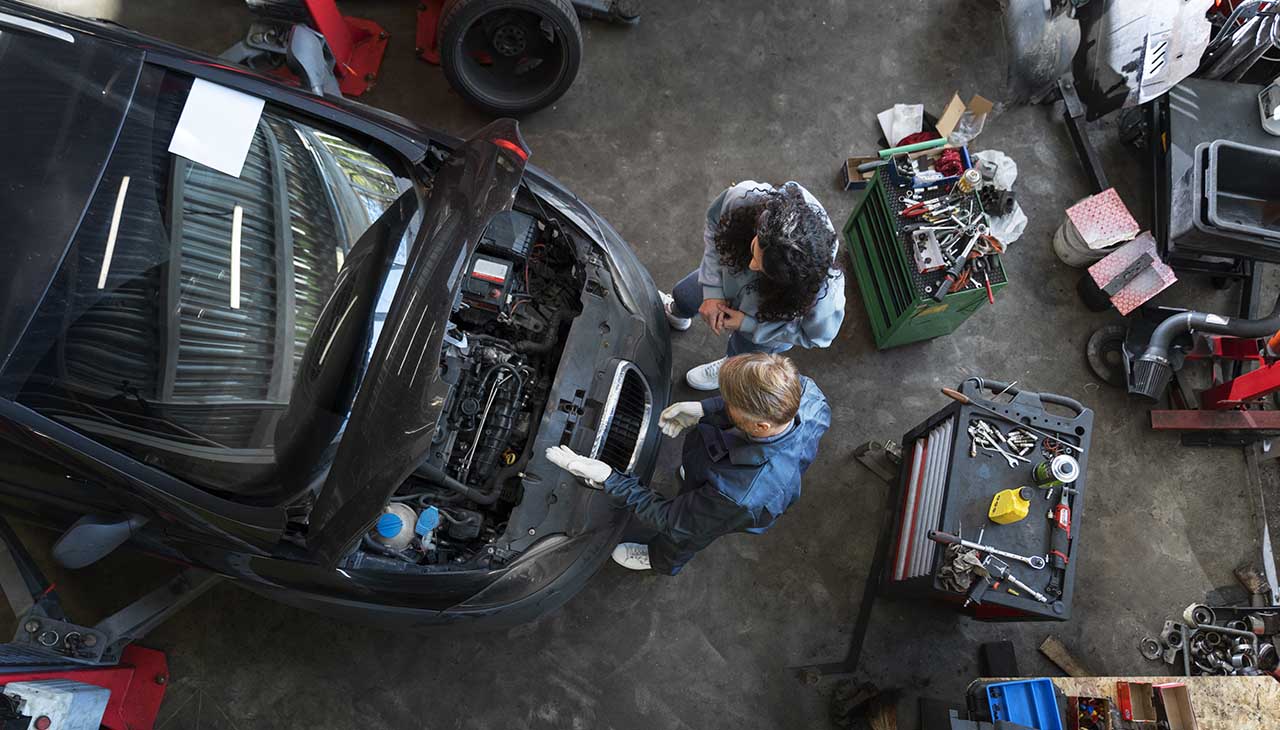Introduction
Accidents happen. Whether it’s a minor fender bender or a more serious collision, understanding the collision repair process is crucial for every car owner and automotive enthusiast. Not only does it help in managing expectations, but it also ensures that your vehicle is restored to its original condition efficiently and safely. This comprehensive guide will walk you through each step of the collision repair process, from the moment the accident occurs to the time your car is fully restored.
The Initial Steps: What to Do at the Scene of the Accident
The moments following an accident can be chaotic and stressful. However, it’s essential to stay calm and follow these steps:
- Ensure Safety: Check if anyone is injured and call emergency services if necessary. Move to a safe location if possible.
- Document the Scene: Take photos of the accident scene, including all vehicles involved, any visible damages, and the surrounding area.
- Exchange Information: Collect contact, insurance, and vehicle information from all parties involved.
- File a Police Report: Even for minor accidents, having an official report can be beneficial when dealing with insurance companies.
- Notify Your Insurance Company: Inform your insurer about the accident as soon as possible to start the claims process.
Choosing a Repair Shop: Factors to Consider
Selecting the right collision repair facility is critical to ensure high-quality repairs. Here are some factors to consider:
- Reputation and Reviews: Look for shops with excellent customer reviews and ratings. Word-of-mouth recommendations from friends and family can also be invaluable.
- Certification and Training: Ensure the shop employs certified technicians who have received proper training in collision repair.
- Warranty and Guarantee: A reputable shop should offer a warranty on their work, giving you peace of mind that any issues will be addressed.
- Equipment and Technology: Modern vehicles require advanced tools and technology for accurate repairs. Ensure the shop is well-equipped.
- Customer Service: A shop that communicates clearly and regularly with you throughout the repair process can significantly reduce stress.
The Repair Process: A Detailed Breakdown
Understanding what happens during the repair process can help manage your expectations and ensure transparency. Here’s a step-by-step breakdown:
- Assessment: The first step is a thorough inspection to assess the extent of the damage. This will often involve a detailed written estimate of the repair costs.
- Disassembly: In some cases, a more in-depth inspection is needed, requiring the disassembly of damaged parts to uncover hidden issues.
- Repair: This stage includes the actual repair work, such as frame straightening, replacement of damaged parts, and bodywork.
- Reassembly: After repairs, the vehicle is reassembled, including any components that were removed during the disassembly phase.
- Paint and Finishing: The final step is painting and finishing, ensuring the repaired areas match the rest of the vehicle perfectly.
The Role of Insurance: Navigating Through Claims
Dealing with insurance can be one of the most daunting parts of the collision repair process. Here’s how to navigate it effectively:
- File a Claim: After notifying your insurer about the accident, you’ll need to file an official claim. Provide all necessary documentation, including the police report and photos of the damage.
- Insurance Adjuster: An adjuster will inspect your vehicle and the repair estimate to determine the amount covered by your policy.
- Repair Authorization: Once the claim is approved, you can authorize the repair shop to begin work. Make sure to keep in close communication with both the shop and your insurance company.
- Payments and Deductibles: Understand your policy terms, including any deductibles you need to pay out-of-pocket before insurance covers the rest.
Quality Assurance: Ensuring the Quality of Work
After the repairs are completed, it’s crucial to ensure the work meets high standards:
- Post-Repair Inspection: Conduct a thorough inspection of your vehicle to check for any remaining issues or imperfections.
- Test Drive: A test drive can help identify any mechanical or alignment issues that may have been missed.
- Obtain Documentation: Ensure you receive a detailed invoice and documentation of all repairs made, including any warranties.
Preventative and Maintenance Tips
While accidents can sometimes be unavoidable, there are steps you can take to reduce the risk and maintain your vehicle post-repair:
- Regular Maintenance: Keep up with regular maintenance, including oil changes, tire rotations, and brake inspections.
- Safe Driving Habits: Practice defensive driving, avoid distractions, and always obey traffic laws.
- Vehicle Upkeep: Keep your vehicle clean and regularly check for any signs of wear and tear that may need attention.
Conclusion
Understanding the collision repair process can make a significant difference in how you handle an accident and the subsequent restoration of your vehicle. By knowing what steps to take immediately after an accident, how to choose the right repair shop, and what to expect during the repair process, you can ensure that your car is restored to its optimal condition. Remember, staying informed and proactive is key to navigating the collision repair process smoothly and effectively.
If you found this guide helpful, feel free to share it with other car owners and enthusiasts. Safe driving!

